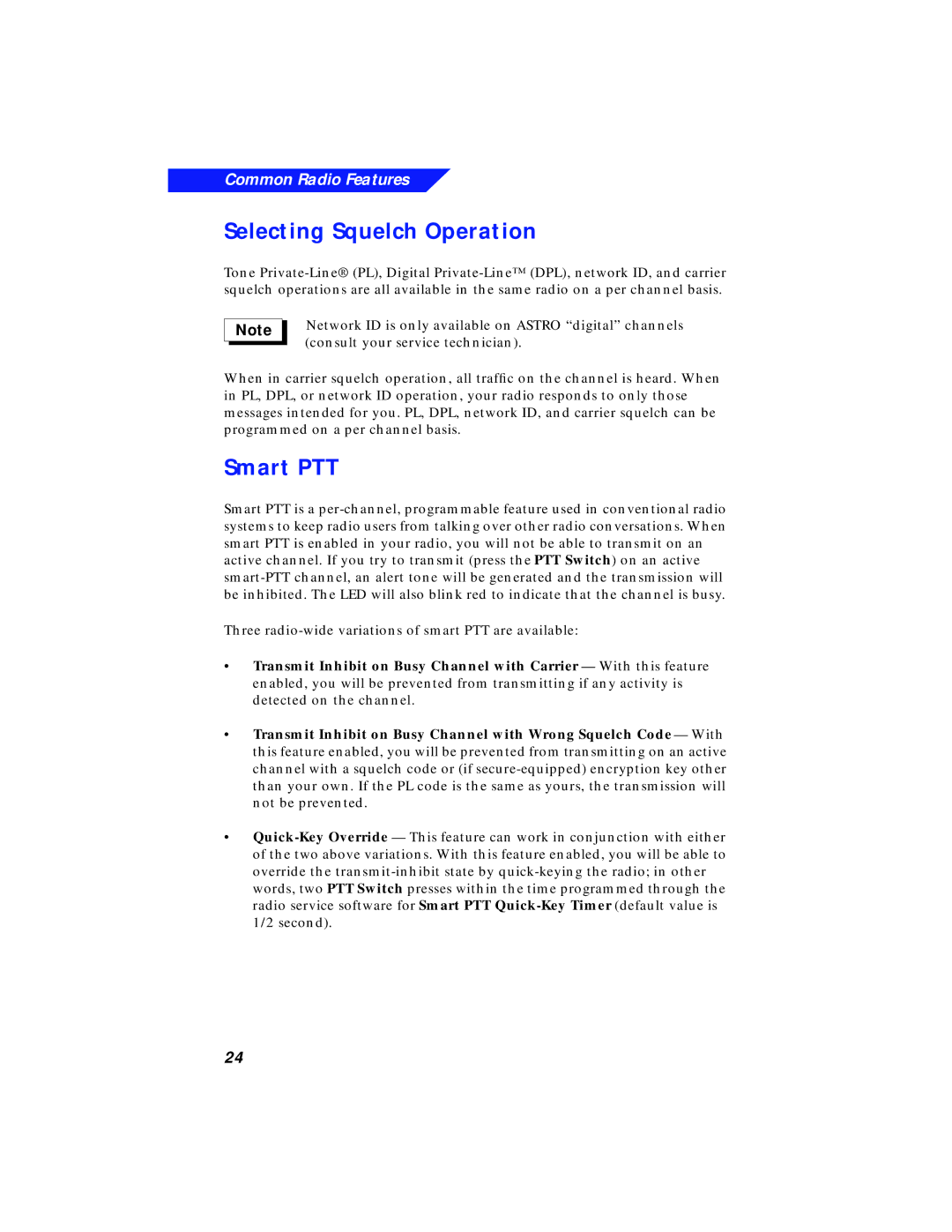Common Radio Features
Selecting Squelch Operation
Tone Private-Line® (PL), Digital Private-Line™ (DPL), network ID, and carrier squelch operations are all available in the same radio on a per channel basis.
Network ID is only available on ASTRO “digital” channels (consult your service technician).
When in carrier squelch operation, all traffic on the channel is heard. When in PL, DPL, or network ID operation, your radio responds to only those messages intended for you. PL, DPL, network ID, and carrier squelch can be programmed on a per channel basis.
Smart PTT
Smart PTT is a per-channel, programmable feature used in conventional radio systems to keep radio users from talking over other radio conversations. When smart PTT is enabled in your radio, you will not be able to transmit on an active channel. If you try to transmit (press the PTT Switch) on an active smart-PTT channel, an alert tone will be generated and the transmission will be inhibited. The LED will also blink red to indicate that the channel is busy.
Three radio-wide variations of smart PTT are available:
•Transmit Inhibit on Busy Channel with Carrier — With this feature enabled, you will be prevented from transmitting if any activity is detected on the channel.
•Transmit Inhibit on Busy Channel with Wrong Squelch Code — With this feature enabled, you will be prevented from transmitting on an active channel with a squelch code or (if secure-equipped) encryption key other than your own. If the PL code is the same as yours, the transmission will not be prevented.
•Quick-Key Override — This feature can work in conjunction with either of the two above variations. With this feature enabled, you will be able to override the transmit-inhibit state by quick-keying the radio; in other words, two PTT Switch presses within the time programmed through the radio service software for Smart PTT Quick-Key Timer (default value is 1/2 second).

